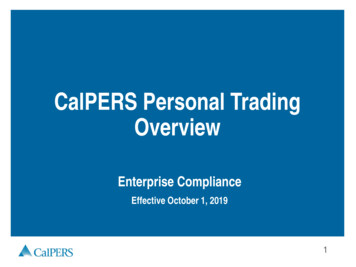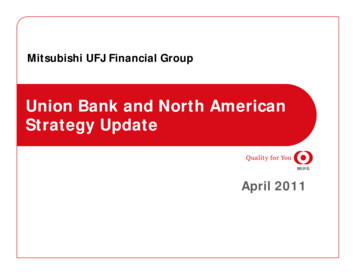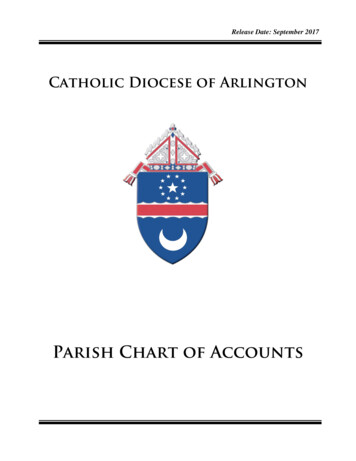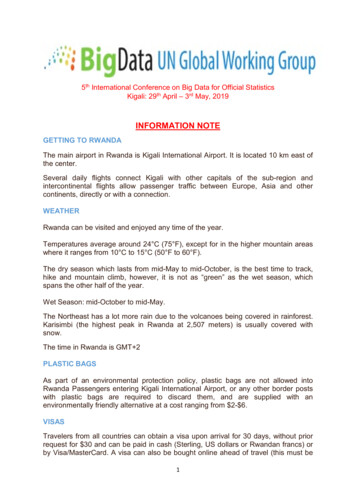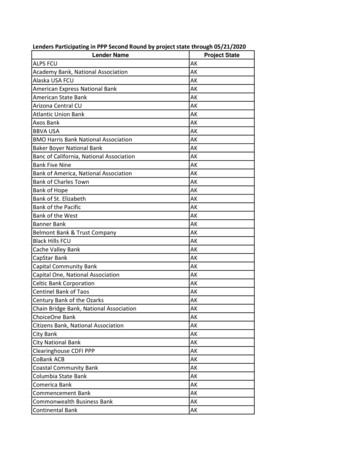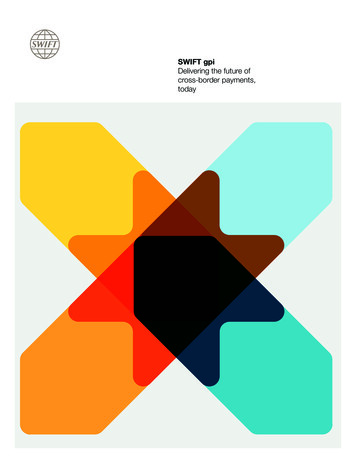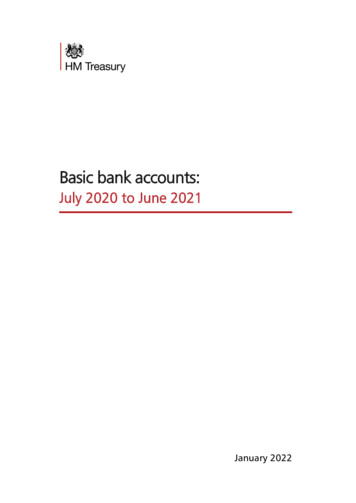
Transcription
Basic bank accounts:July 2020 to June 2021January 2022
Basic bank accounts:July 2020 to June 2021January 2022
Crown copyright 2022This publication is licensed under the terms of the Open Government Licence v3.0 exceptwhere otherwise stated. To view this licence, visit /version/3.Where we have identified any third party copyright information you will need to obtainpermission from the copyright holders concerned.This publication is available at: www.gov.uk/official-documents.Any enquiries regarding this publication should be sent to us atpublic.enquiries@hmtreasury.gov.uk
ContentsChapter 1Introduction3Chapter 2Basic bank accounts5Chapter 3Market distribution9Chapter 4Further information101
2
Chapter 1Introduction1.1Since the start of 2016, the 9 largest personal current account (PCA)providers in the UK have been legally required to offer basic bank accountsthat are fee-free for standard operations, including a failed payment,removing the risk that customers run up unintended overdrafts. Basic bankaccount customers are able to use the same services (e.g. ATM and PostOffice counter access) as a financial institution’s other PCA customers. These9 institutions are: Barclays UK The Co-operative Bank HSBC UK Lloyds Banking Group (including Halifax and Bank of Scotland brands) Nationwide Building Society NatWest Group (including RBS and Ulster Bank brands) Santander UK TSB Virgin Money (formerly Clydesdale & Yorkshire Bank)1.2Since September 2016, these institutions have offered basic bank accountsunder the terms of the Payment Accounts Regulations 2015. Prior to this,basic bank accounts were offered under the terms of a voluntary agreement(‘the 2014 agreement’), which was the result of extensive negotiations withthe banking industry to improve basic bank accounts. The 2014 agreementis still in force and complements the terms set out under the PaymentAccounts Regulations 2015.1.3The government set the threshold for participation in the 2014 agreementon the basis of personal current account market share. This was to ensurethat the largest institutions were captured, as well as the medium-sizedinstitutions who were seeking to grow their market share and ensuredsufficient coverage across over 90% of the UK’s PCA market.1.4The 2014 agreement included a commitment by participating institutions toprovide data to HM Treasury on the basic bank accounts and personalcurrent accounts, and a commitment by HM Treasury to publish informationon basic bank account market share. The data in this publication fulfils thatcommitment.3
The Payment Accounts Regulations 20151.5The 2014 agreement was made in the knowledge that the requirementsin the EU’s Payment Accounts Directive (PAD) would apply to the UK from18 September 2016. The Payment Accounts Regulations 2015 (PARs)transposed the PAD into domestic law. Ahead of the UK’s withdrawal fromthe EU, the PARs were amended by the Payment Accounts (Amendment) (EUExit) Regulations 2019.1.6The PAD did not require every credit institution in the UK to offer basic bankaccounts. Instead, the PAD required basic bank accounts to be provided toconsumers by a sufficient number of firms to guarantee access for allconsumers and prevent distortions of competition.1.7At Budget 2016, the government designated the same 9 participatinginstitutions under the Payment Accounts Regulations 2015 (PARs) as thosedesignated in the voluntary agreement. This was based on an assessment ofthe institutions’ geographic coverage, distribution of consumers and PCAmarket shares.1.8At the same time, the then Economic Secretary to HM Treasury wrote to thedesignated institutions to clarify that where their earlier commitments underthe 2014 agreement were not superseded by the PARs, they were expectedto continue to meet them. That included continuing to report the dataoutlined in paragraph 1.4 above. HM Treasury included the text of theseletters in the first publication of basic bank account data in December 2016.About the data1.9This publication presents data that has been reported to HM Treasury,covering the period July 2020 to June 2021, by each of the 9 designatedinstitutions. HM Treasury has committed to publishing the data annually.1.10This publication does not include data from institutions that were notdesignated under the PARs. Other institutions in the UK may offer accountsthat have similar features to a basic bank account, or are marketed as such,but data on those accounts is not reported to HM Treasury.1.11The figures reported have not been verified by HM Treasury or any otherbody. Enquiries on any individual institution’s data or basic bank accountproduct should be directed to that institution. The Financial ConductAuthority (FCA) is responsible for ensuring designated institutions complywith the PARs.4
Chapter 2Basic bank accountsTotal stock of basic bank accounts2.1As of 30 June 2021, there were 7,240,791 basic bank accounts open at thenine designated institutions.2.2Chart 2.A shows how many of these basic bank accounts were open at eachdesignated institution.Chart 2.A: Total stock of basic bank accounts on 30 June 2021Number of basic bank accountsNumber of basic bank accounts open on 30 June urce: HM Treasury A basic bank account is considered open even if no transactions havetaken place on the account. A basic bank account is considered open if a decision has been taken toclose the account, but the account has not yet been closed.5
Upgrades and migrations2.3Designated institutions may review their portfolio of basic bank accountsperiodically and upgrade customers on to a more appropriate personalcurrent account (PCA), taking account of: the eligibility criteria of basic bank accounts the customer’s financial circumstances how the account is being used2.4Institutions will give the customer at least two months’ written noticeexplaining why they intend to upgrade the account. Institutions should alsohave regard to the FCA’s requirement to treat their customers fairly.2.5Chart 2.B shows the total number of basic bank accounts that have beenupgraded and/or migrated to another PCA in the reporting period by adesignated institution.Chart 2.B: Total upgrades and migrations of basic bank accountsNumber of basic bank accountsNumber of basic bank accounts upgraded and migrated in the reporting period40,00030,00020,00010,0000Upgraded in periodMigrated in periodTotal upgrades and migrationsSource: HM Treasury The figures include basic bank accounts that have been upgraded at thecustomer’s request, as well as those upgraded or migrated in line with theprocess set out in the 2014 agreement. The figures do not include the number of basic bank accounts for whichwritten notice has been given to the account holder(s) that they will beupgraded but have not been upgraded by the end of the reportingperiod.6
Opening and closing2.6Chart 2.C shows the number of basic bank accounts that have been openedand closed during the reporting period.2.7A basic bank account opened under the PARs may only be closed withoutthe consumer’s consent in limited circumstances, for example, if a consumerhas knowingly used, or attempted to use, the account for illegal purposes, orif there has been no transaction on the account for more than 24 months.1Chart 2.C: Basic bank accounts opened and closed in the reporting periodNumber of basic bank accountsNumber of basic bank accounts opened and closed in the reporting 00OpenedClosedSource: HM Treasury The figures include basic bank accounts closed at the customer’s request,as well as those closed in line with the processes set out in the PARs.1 A full list of the circumstances in which a provider can close a basic bank account can be found in regulation 26 of the PARs.7
Refusals2.8Under the PARs, designated institutions must refuse to open a basic bankaccount for a consumer where it would be unlawful for it to do so. Thisincludes, for example, where opening an account would be contrary to theFraud Act 2006 or the Money Laundering Regulations.22.9Chart 2.D shows the number of basic bank account applications refused ateach institution.2.10The charts below include cases where an application could not be accepteddue to the customer not meeting a participating institution’s identificationrequirements (where these took place after a full application has been made)or fraud checks.Chart 2.D: Number of basic bank account applications refused in the reportingperiodNumber of basic bank account applicationsrefusedNumber of basic bank account applications refused in the reporting period25,00020,00015,00010,0005,0000Source: HM Treasury The data does not include partially completed applications that are notconsidered. The data does not include applications that are still under consideration or‘pending’. There is not a standardised definition of what constitutes a refusedapplication, which may explain some of the variation between the refusalnumbers of each designated institution. The PARs require that where an application is refused, the participatinginstitution must, without delay, inform the customer in writing and freeof charge of the reason for the refusal if it may lawfully do so. In thosecircumstances the institution must also tell the customer how to complainto the institution and the Financial Ombudsman Service and provide therelevant contact details.2 A list of further circumstances in which a provider would have to refuse the opening of a basic bank account can be found inregulation 25 of the PARs.8
Chapter 3Market distributionMarket shares3.1Chart 3.A uses data reported by designated institutions on their totalnumbers of personal current accounts and basic bank accounts to calculatemarket shares and compare them.3.2Market share in chart 3.A refers to the respective shares of the market heldby each of the nine designated institutions in comparison with each otheronly. The market shares have not been calculated based on the entire UKmarket.3.3The personal current account market shares have been rounded to thenearest 5% (or 1% where that value would have been zero), because somefirms consider personal current account market share to be commerciallysensitive information.3.4Designated institutions are not required to reach or exceed any particularnumber of basic bank accounts. There is no upper or lower limit on thenumber of basic bank accounts a designated institution can open or hold.Chart 3.A: Comparing personal current account market share and basic bankaccount market shareMarket SharePersonal current account market share and basic bank account market share at 30June 202140%35%30%25%20%15%10%5%0%Basic bank account market sharePersonal current account market shareSource: HM Treasury9
Chapter 4Further information4.1Money Helper provides further information about basic bank accounts on itswebsite.4.2If you would like to know more about a specific credit institution’s basicbank account product, or would like to apply for one, you can visit any ofthe nine providers’ websites or ask in branch for more information.4.3HM Treasury’s previous publications of basic bank account data can befound on gov.uk.4.4Further information about the 2014 agreement can be found on gov.uk.4.5The Payment Accounts Regulations 2015 can be found on legislation.gov.uk4.6Following the UK’s exit from the EU, the Payment Accounts Regulations wereamended by the Payment Accounts (Amendment) (EU Exit) Regulations2019. Further information can be found on gov.uk.10
HM Treasury contactsThis document can be downloaded from www.gov.ukIf you require this information in an alternative format or have generalenquiries about HM Treasury and its work, contact:Correspondence TeamHM Treasury1 Horse Guards RoadLondonSW1A 2HQTel: 020 7270 5000Email: public.enquiries@hmtreasury.gov.uk11
Basic bank accounts Total stock of basic bank accounts nine designated institutions. 2.2 Chart 2.A shows how many of these basic bank accounts were open at each designated institution. Chart 2.A: Total stock of basic bank accounts on 30 June 2021 Source: HM Treasury A basic bank account is considered open even if no transactions have




